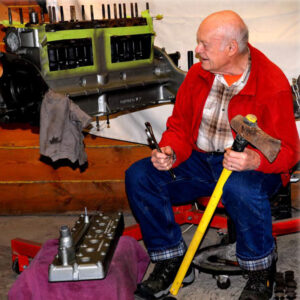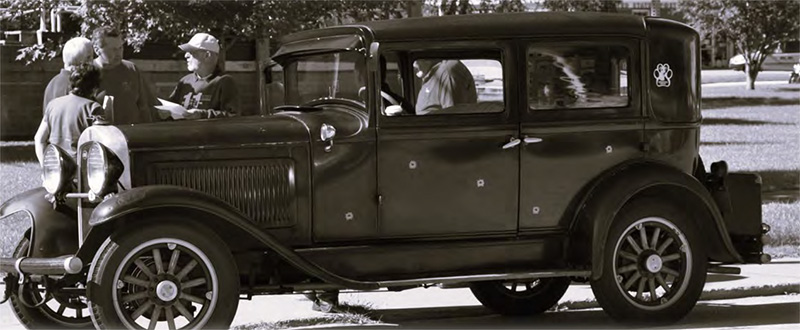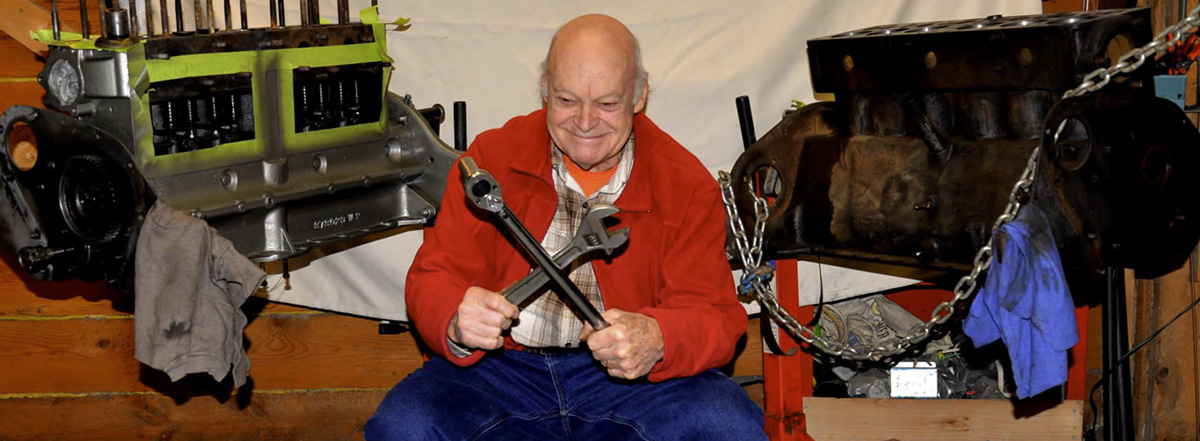After much deliberation, we decided that the “spare” engine should move into the “boat anchor” category. You can see on the front page, we have installed the anchor chain.

Despite being rebuilt in its past, the “anchor” appeared to have run many hours since. The deciding issue was the unacceptable amount of out-of-round and taper of the cylinders. They had already been bored 0.030” oversize and to correct this issue, they would have to be bored again to 0.040” or more oversize. One of our experts noted that .040” oversize pistons are not available and would have to be custom made at exorbitant cost.
If you recall, Gary’s suggestion in last month’s Wheel Tracks was to equip Rosie with a nice air-cooled Franklin engine. You would think if air-cooled was so great, they would have put them in airplanes. Oh, that’s right, they did!
So, back to the Whippet’s (Rosie’s) original “lunch” engine. It is, by the way, not original to the car. Based on serial numbers, it is a 1929 engine in a 1930 car. No problem, those two years of Whippets were identical. Having pulled the engine from Rosie, it now sits in Gary’s shop next to the boat anchor. The bad bearing that we had surmised was a main bearing based on the sound – thump, thump – turned out to be a rod bearing. All else looked acceptable with a bit of adjustment of the bearing clearances. The bad rod bearing was repaired by using a rod from the spare engine.
According to the 1933 Motor’s Repair Manual, the main bearing clearance should be 0.002” and the rod bearing clearance should be 0.001”. Adjustments to remedy bearing clearances greater than that are made by filing the bearing caps. Most of Rosie’s bearings were close, needing only a little filing to achieve the desired clearance. We preferred to stay in the range of .0025—.002.
Of greater concern was the worn timing chain which was “toast” according to Dennis Dodd. (I’m not sure if that is a technically correct term, but you get the picture.) I just happened to have, in my garage, a cigar box with 3 timing chains.Been there for years. One was new, but only 71 links instead of the required 85. A second chain was worn. Both had “master links”. So, we set about cannibalizing extra links from the worn chain to bring the new chain up to 85. We learned how these chains were made and the difficulty of disassembling them.
Gary found a beautiful new 85 link chain on the internet, but unfortunately it was a “center guide” instead of an “edge guide” required by Rosie. These chains are one inch wide. A center guide has links in the center which ride in a groove in the gears. The edge guide has similar links on each edge which capture the gears between them. I still have two more parts engines here which might have better chains but must get out in the cold to disassemble them. We have been cleaning engine parts and Gary has applied paint to the engine block and head. I had been told that the original engine color was a grayish green. Without that color available, Gary bought a can of “racing green” from NAPA. With that Rosie will feel pretty sporty as she cruises along at her usual 35 to 40 MPH!


From Wendell Nobel:
Let’s introduce the Franken-engine syndrome. We have two fatally disabled engines which were identical when new. They are disabled for different reasons. Therefore, it should be possible to assemble one good flawlessly working engine from judiciously selected parts, leaving the other as a boat anchor. I’ve got my fingers in two of these cases right now. One is Charlie Thompson’s ’30 Whippet and the other is my own ’29 Plymouth. The judicious decisions are driven by the economics of expensive outside specialist machine shops, if they are to be found, and new parts. Meet Miss Rosie. Ain’t She A Beauty?
Swapping a good crankshaft to another engine means rebabbitting bearings and line boring, if available within driving distance. Regrinding out of round or damaged crankshaft journals can’t be done in Vermont. Getting correctly sized pistons for oversized rebored cylinders is doable but expensive. With help from a faithful lab assistant, Igor, we will ultimately breathe new life into both car’s engines. We’ve got a good supply of Igors, but a limited supply of funds.

From Gary Fiske:
Like Wendell, we all have engine “stuff” going on. I might have mentioned something about a Franklin I recently brought home from Toronto. I got a good deal on it, and I am glad I have it, but… I need to find out why I have low compression in three cylinders. These old cars always have surprises!
We less experienced mechanics, with confidence issues, are always looking for early ways to test our engine before completing assembly. A few of Rosie’s valves were found to leak a bit by using compressed air and Windex bubbles. Those bubbles were also used to find over-worn valve guides. Some simply put the engine upside-down and squirt a little gas into the backside of the valve head. A good valve and seat will hold the gas back very nicely. A compression check is also planned the minute Rosie’s engine head is fitted in place.
Do you think we give enough credit to the early 19th century engineers and mechanics who had no “experts” guiding them?


Leave a Reply